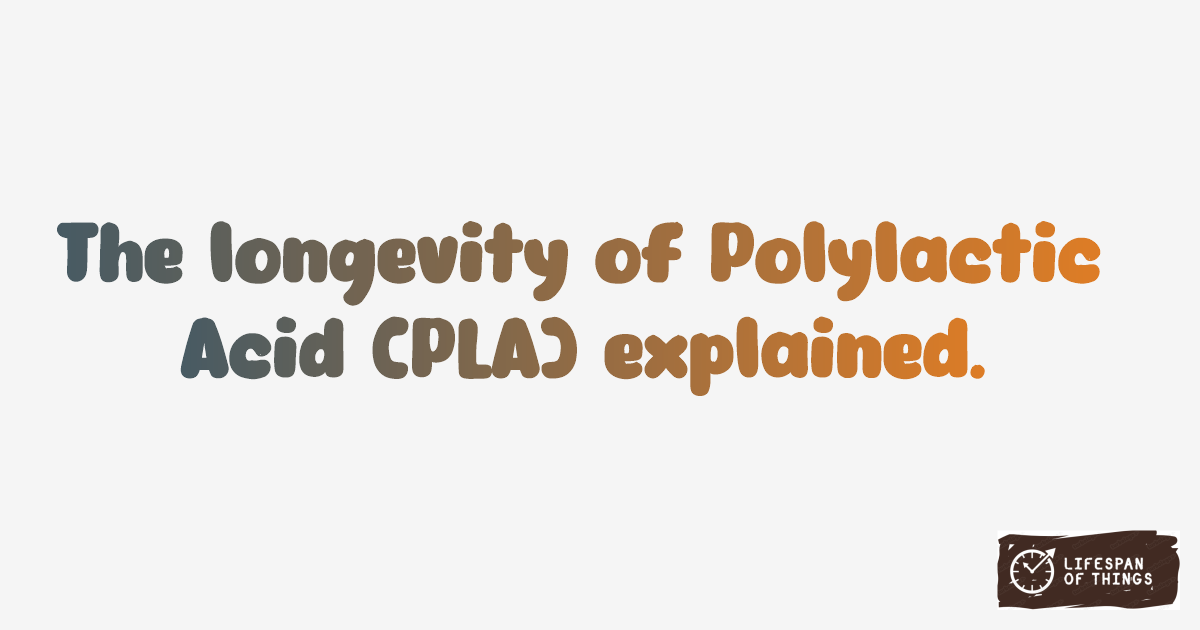
5 - 10 Years
Lifespan of Polylactic Acid (PLA) is 5 - 10 Years. Factors influencing the lifespan of Polylactic Acid (PLA) include exposure to sunlight, temperature fluctuations, and moisture levels. Proper storage away from heat and direct sunlight can help extend the lifespan of Polylactic Acid (PLA) while minimizing degradation.
Useful Information
Polylactic Acid (PLA) exhibits properties such as biodegradability, transparency, and heat resistance. Different types of Polylactic Acid (PLA) include PLA+, which provides enhanced strength and flexibility for specific applications.
Explore how bioplastics offer strength, flexibility, and biodegradability, making them a sustainable alternative to traditional plastics. Read more
Polylactic Acid (PLA) is commonly used in 3D printing, food packaging, and medical implants due to its biocompatibility. Its versatility extends to industries like fashion, automotive, and electronics, showcasing its broad range of applications.
The durability of Polylactic Acid (PLA) can be affected by exposure to high temperatures, humidity, and chemicals. Factors influencing its lifespan include proper storage, maintenance, and avoiding harsh conditions. Tips to enhance its durability include storing in a cool, dry place and avoiding prolonged exposure to sunlight.
The environmental impact of Polylactic Acid (PLA) production involves energy consumption and greenhouse gas emissions. However, its biodegradable nature makes it a more sustainable alternative to traditional plastics. Choosing compostable PLA products and recycling used PLA items can further reduce environmental impact.
To preserve Polylactic Acid (PLA), avoid storing it in high humidity environments or exposing it to extreme temperatures. Regular cleaning with mild soap and water can help maintain its appearance and functionality. Avoid using harsh chemicals that may degrade the material, and store PLA items in airtight containers to prevent moisture absorption.
Lifespan Comparisons
| Compared Item | Comparison Description |
|---|---|
| Lifespan of Polyhydroxyalkanoates (PHA) | Polylactic Acid (PLA) and Polyhydroxyalkanoates (PHA) have a similar lifespan, lasting for a moderate period. |
| Lifespan of Starch-Based Plastics | Compared to Starch-Based Plastics, Polylactic Acid (PLA) has a lifespan that falls within the same range. |
| Lifespan of Cellulose-Based Plastics | Cellulose-Based Plastics last significantly longer than Polylactic Acid (PLA), offering a durable alternative. |
| Lifespan of Polybutylene Succinate (PBS) | Polybutylene Succinate (PBS) outlasts Polylactic Acid (PLA) by a few years, providing enhanced longevity. |
| Lifespan of Kevlar | Kevlar and Polylactic Acid (PLA) have a similar lifespan, suitable for various applications. |
| Lifespan of Nomex | Nomex lasts considerably longer than Polylactic Acid (PLA), ensuring extended durability in use. |
| Lifespan of Gore-Tex | Gore-Tex and Polylactic Acid (PLA) offer similar lifespans, providing reliable performance over time. |
| Lifespan of Dyneema | Dyneema and Polylactic Acid (PLA) offer comparable durability, ensuring lasting quality in diverse settings. |
| Lifespan of Vega | Compared to Polylactic Acid (PLA), Vega offers a similar lifespan, suitable for various applications. |
| Lifespan of Earth | Polylactic Acid (PLA) does not match the impressively long lifespan of Earth, which stands the test of time. |
| Lifespan of Mars | Mars and Polylactic Acid (PLA) have a similar lifespan, making them suitable for different environmental conditions. |
| Lifespan of Jupiter | Jupiter outlasts Polylactic Acid (PLA) by a significant margin in terms of lifespan, serving as a durable choice. |
| Lifespan of Venus | Venus and Polylactic Acid (PLA) offer a similar lifespan, providing reliable performance in various situations. |
| Lifespan of Saturn | Polylactic Acid (PLA) and Saturn feature a similar lifespan, offering lasting quality in different applications. |
| Lifespan of Moon (Earth) | Moon outlasts Polylactic Acid (PLA) by a considerable amount, providing extended durability over time. |
Frequently Asked Questions
Lifespan of Polylactic Acid (PLA) is 5 - 10 Years.
Exposure to high temperatures, humidity, and chemicals can affect the durability of Polylactic Acid (PLA).
Polylactic Acid (PLA) is commonly used in 3D printing, food packaging, and medical implants due to its biocompatibility.
Storing in a cool, dry place, avoiding direct sunlight, and proper maintenance can enhance the durability of Polylactic Acid (PLA) products.
While production involves energy consumption and greenhouse gas emissions, Polylactic Acid (PLA) is a more sustainable alternative to traditional plastics due to its biodegradable nature.
Regular cleaning with mild soap and water, avoiding harsh chemicals, and storing in airtight containers can help maintain Polylactic Acid (PLA) items.








